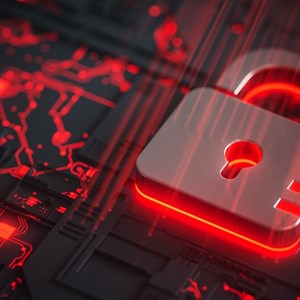**Emergence of Automated Ransomware Campaigns: LockBit Utilizes Phorpiex Botnet**
In a recent development, cybersecurity experts have unveiled a significant ransomware campaign that employs the automated deployment of LockBit ransomware through the Phorpiex botnet. This revelation, reported by Cybereason Security Services, highlights a notable shift in the tactics employed by cybercriminals, as they begin to leverage botnets to circumvent conventional human-operated ransomware strategies.
**The Evolution of Attack Techniques**
Traditionally, LockBit attacks were characterized by manual execution, where threat actors engaged in extensive lateral movements within networks to expand their reach and infect systems. The current campaign, however, has taken a more streamlined approach. By utilizing the Phorpiex botnet—also referred to as Trik—the attackers have automated the deployment and execution of LockBit directly onto compromised machines. This change represents a significant evolution in the methodology of ransomware deployment.
Researchers at Cybereason discovered that the initial phase of the campaign involved the delivery of phishing emails containing ZIP file attachments. These malicious files played a crucial role in executing infections. Depending on the specific variant employed, the ZIP files either contained SCR files designed for downloading LockBit or LNK files associated with the Phorpiex TWIZT variant. Such tactics underscore the continued sophistication of ransomware deployments, utilizing social engineering techniques to lure victims.
In this context, the LockBit downloader was observed reaching out to a known command-and-control (C2) server during the analysis. While there were no successful connections at the time, the behaviors exhibited by the binary were consistent with LockBit’s historical methods of operation, indicating a continuation of established attack patterns even within the framework of new tactics.
**Understanding the Mechanics of Phorpiex Variants**
Phorpiex has largely retained its inherent structure since its source code was sold in 2021, with various iterations like TWIZT and a GandCrab downloader following a predictable operational pattern. This process begins with the initial infection via phishing emails containing malicious ZIP attachments, which lead to the execution of files in standard Windows directories. Following this, either LockBit or other payloads are downloaded and executed.
Importantly, the malware operators ensure that evidence, such as Zone.Identifier metadata, is eliminated to obscure their tracks. Furthermore, persistence is achieved through modifications to Windows registry keys, allowing the malware to maintain a foothold even after potential initial disinfection attempts.
The TWIZT variant appears particularly adept, as it checks for a JPEG marker file to prevent reinfection. It also creates a mutex to inhibit multiple infections on the same host, thereby optimizing its effectiveness. The GandCrab variant is equipped with anti-analysis mechanisms, including a built-in self-termination feature when it detects the presence of sandbox-related modules, in addition to disabling Windows Defender protections.
**Impact on the Ransomware Threat Environment**
The emergence of this campaign illustrates a compelling narrative regarding the adaptability of ransomware groups, particularly LockBit, in the aftermath of intensified law enforcement efforts to dismantle their operations. Notably, global initiatives such as Operation Cronos, launched in early 2024, aimed to disrupt LockBit’s activities. Despite these efforts, the group has demonstrated resilience and continues to evolve its tactics.
By integrating automated, botnet-driven strategies into their arsenal, LockBit affiliates mitigate the risks and time associated with manual intrusions. This innovative approach not only amplifies the potential for widespread infections but also complicates detection efforts, as it creates a blurred line between common malware and targeted ransomware operations.
In response to these evolving threats, cybersecurity experts emphasize the necessity of reinforcing email security measures. Organizations are urged to adopt vigilant monitoring practices for registry changes and to remain alert to any unusual file downloads that may signal an impending attack. Such proactive measures are essential in fortifying defenses against the relentless evolution of ransomware strategies in today’s cyber landscape.


